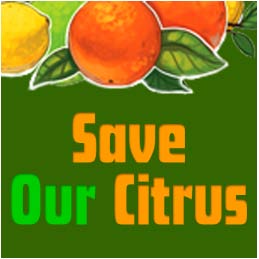Pests and Diseases
#CitrusMatters Spreads Info
#CitrusMatters Helps Spread Word on Serious Citrus Greening Disease
By Kyle Buchoff, Assistant Editor
Steve Olson, senior product manager for Bayer CropScience has a big passion for citrus, an important U.S. crop currently at risk to Huanglongbing (HLB), also known as citrus greening, a bacterial citrus plant disease. The vector of the deadly disease is a tiny insect known as the Asian citrus psyllid. Bayer CropScience launched the #CitrusMatters initiative this year to fully convey the significance of HLB to the California public.
Olson said the initiative focused on California’s urban settings because more than 60 percent of homeowners in California grow citrus trees in their yards. “We felt we could have some influence on broadening public awareness of this very significant disease.”
“So we introduced the #CitrusMatters initiative with California Citrus Mutual to help spread through social media the importance of citrus and how people enjoy citrus,” said Olson. “We were trying to make that emotional connection, and I think to a degree we have had some success. We held a #CitrusMatters Day in San Diego on May 8 and in Los Angeles on July 2, and tried to engage mass media. I think it is a very important undertaking to really bring awareness to homeowners who have citrus in their backyards.”
For more information go to: citrusmatters.bayercropscience.us.














 it in the citrus industry.”
it in the citrus industry.” surprise to us. That is typically where diseases first show up. At the present time, the ACP are contained. We are starting to delimit that area, and residents are very cooperative in allowing those trees to be removed.”
surprise to us. That is typically where diseases first show up. At the present time, the ACP are contained. We are starting to delimit that area, and residents are very cooperative in allowing those trees to be removed.”







